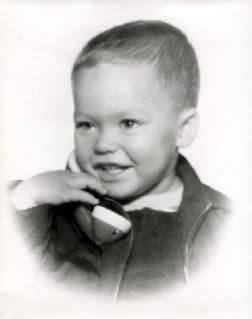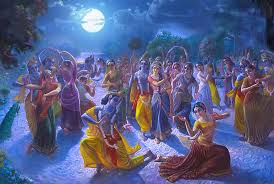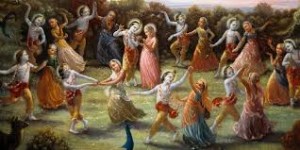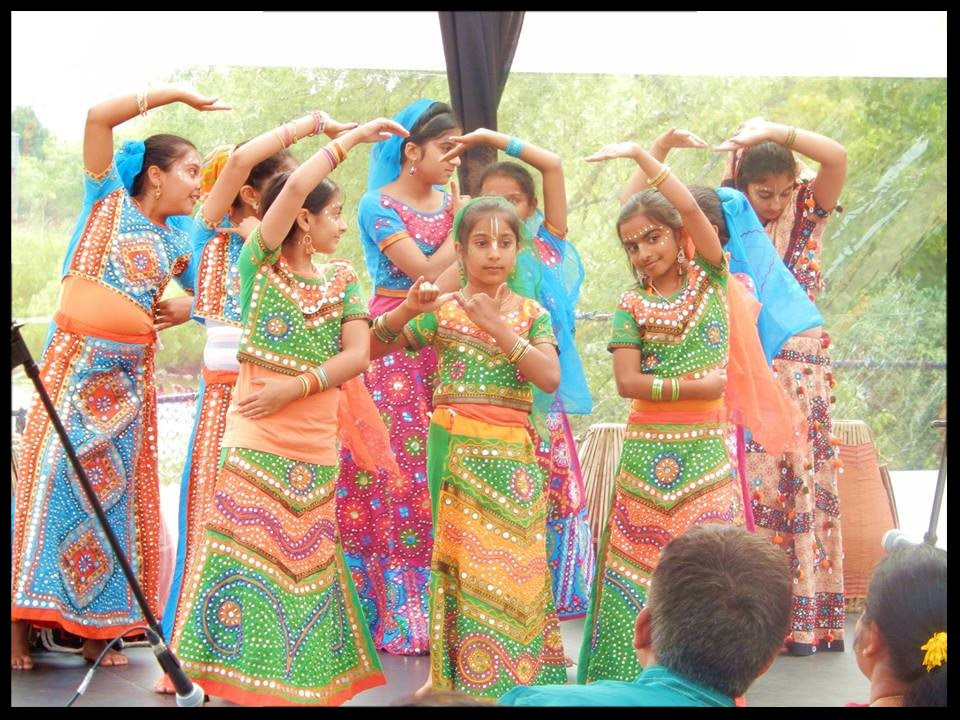
By Mahatma Das
What follows are the main principles I teach in my marriage workshop entitled Sacred Union, The laws of relationship. Following these principles can help a bad marriage become good, a good marriage become better, and turn around a marriage that seems doomed to fail.
I, and many others, have found these principles extremely valuable in creating a good marriage. Please put these principles into practice in your marriage and share them with as many people as possible. These principles are common sense, yet both profound and extremely effective, and they can be successfully used by anyone.
Is a healthy marriage really important?
After you read all the principles on creating a healthy marriage, you might be thinking, “It’s a lot of work to create a good marriage. I don’t know if I can do all of this. And anyway, is it really worth all the trouble? Is a good marriage really that important? Aren’t we supposed to be more detached? And if the relationship isn’t good, isn’t it just my karma and thus Krishna’s mercy to help me become more detached?”
This begs the question, “What does it mean to have a good marriage in Krishna consciousness?” I have never seen Prabhupada instruct his disciples to have a bad marriage because that would make a marriage “good,” meaning the couple will be so disturbed that they realize that they can’t be happy in the material world.
If you advance in Krishna consciousness, you will naturally realize that real love is with Krishna and that there is no happiness anywhere in the material world.
Our scriptures state that the goal of family life is to eventually become detached from family life. But how do you become detached? One of the best ways of becoming detached, although this seems contradictory, is to have a fulfilling marriage.
The point is this:
Marriage is meant to fulfill material desires in a way that one can eventually give them up.
If those desires never get fulfilled, then one may find him or herself hankering to fulfill those desires later in life at a time when they would be winding down had they been married.
A good marriage also means staying together and creating a happy and peaceful home for your children. As Prabhupada said, “Get yourself married and live peacefully together.”
The goal of marriage, however, is not to be happy. The goal is to be happily married. There is a difference. Don’t look to your spouse to make you happy. Look to make your spouse happy. If you do this, you will be happily married.
When you are happily married you create a peaceful platform, an asrama, from which you cultivate your Krishna consciousness well. It is by cultivation of Krishna consciousness that you become happy.
No one has ever become happy trying to satisfy their desires. At the same time, if basic relational needs are not met, one will not be peaceful. Being peaceful is necessary so that we can cultivate our Krishna consciousness.
Sense gratification is not the goal of household life. The goal is to execute Krishna consciousness. If you believe it is your spouse’s responsibility to make you happy, and you expect this from him or her, you will likely be let down and frustrated. Rather, think it is your service to make your spouse happy, to serve them, and to be a good example of Krishna consciousness. This will make you happy.
We know that ultimately the only thing that will make us happy is Krishna consciousness. So if we utilize the grhastha asrama to increase our Krishna consciousness, helping one another in our service to guru and Krishna, we will be happy because we will be advancing in Krishna consciousness.
Laws of relationship
Creating a good relationship is not a mystery. There are laws that create connection. If you are married, or want to be married, as a service to your spouse you need to learn these laws.
There are many books and websites on marriage, in and outside of Krishna consciousness, that can help you better understand how to make a marriage work.
The main point is:
Your spouse can be likened to a machine, and you need to learn the skills required operate this machine well. If you don’t, the machine will not operate properly, or even break down.
When your spouse complains too much, it is likely an indication that you are not operating the machine well. So how do you learn how to better operate the machine? One of the best ways to do this is to ask your spouse how the machine functions best.
And then listen to what he or she says and try to do implement the advice as best you can.
You should enter grhastha asrama with the goal of making the asrama successful by becoming the servant of your husband or your wife, not enter it to become the controller or enjoyer of your spouse. View success in this asrama as success in your Krishna consciousness.
“Succeeding” your marriage is part of what it means to succeed in Krishna consciousness.
The right paradigm
Can you make a 6 out of the symbol “IX” using only one line?
You either are going to figure out how to do this right away, or you are not going to get it. It depends on how you are looking at this, on your paradigm.
Sometimes people fail in their marriage not because of any lack of effort, analysis, or care. Sometimes people fail because they’re locked in the wrong paradigm.
If you’re not seeing your marriage or your spouse in the proper light, then you won’t succeed. And no amount of effort will change that. The only thing that will get you different results is a different perspective. Once you adopt the right perspective, having a good marriage can be as easy as placing an “S” in front of “IX” to make “SIX.”
The point is this:
Unhealthy paradigms that we bring to our marriage become the negative operating programs undermining our marriage, and thus can become the cause of a failed marriage. Similarly, healthy paradigms form the basis of a successful marriage.
Do you have any unhealthy paradigms that are undermining your marriage?
In Iskcon, unfortunately, negative paradigms about women, children and marriage are common. We hear that marriage is a falldown, women are an entanglement, and it is a dark well. Such considerations, when not balanced with the positive sides of grhastha life, can be toxic to a good marriage.
Negative paradigms can be toxic by creating attitudes that make it difficult – or impossible – to have a good marriage.
Another factor that can negatively impact a marriage is holding our spouses to stereotyped roles that are difficult or impossible to fulfill, or assuming roles ourselves that are inappropriate (based on our misunderstanding of sastra).
One such example of this is the teaching that a husband is the guru to the wife. To explain how this teaching is misunderstood, and thus can be harmful to a good relationship, I have written an article titled “Husband as Guru” which it is available on my website and on dandavats.com
It is your duty to love
Our consumer values of, “We want what we want, when we want it,” and then quickly getting it, are entering into our marriages. Today we are less accustomed to working (and waiting) for things than we were in the past. Spouses are becoming a bit like old cars: if the spouse isn’t working well, we trade him or her in for a new model.
Dharma means we do something because it is right, not that we only do something because we like doing it. The point is:
Our duty is to love our spouses, whether or not we love them.
Maharaja Priyavrata was a wonderful kind, loving and caring husband. Yet sastra says he was not at all attached to his wife. This appears contradictory. How can one be so loving yet so detached?
He took loving his wife and family as his duty. Therefore he was the best husband and father. Although we might find this kind of “love” artificial, the so-called love in the material world is more artificial because it is based more on emotions than duty. And if the emotions wane, the relationship also wanes.
When a spouse says, “I don’t have the same feelings for you I had when we were younger,” this translates into, “I don’t love you anymore.” The underpinning is this: “Since I don’t love you anymore, I feel the need to find someone else to love.”
If you want to base your relationship primarily on the feelings of “love” rather than duty, the chances of your marriage lasting, or being a fulfilling relationship – even if you stay together – are rare. But if we take it as our dharma to “love,” the “love” will last.
Dharma is higher than feeling.
Did I marry the right person?
You might sometimes question whether you married the right person. This is the wrong question to ask. As mentioned above, the key to a successful marriage is showing affection, kindness, and sensitivity to the person you found.
The point is:
It is not whether you married the right person, but whether you are “loving” the person you married.
Anyone can fall in love. It takes absolutely no work. And the relationship automatically stays good in this romantic stage. Why? It is because when “in love” you secrete hormones that intoxicate you. This intoxication makes you blind to the faults of your partner. Many of the wonderful things they did when you first “fell in love” become the very things that disturb you later on. You just didn’t pay attention to these things when you first met. You were so in love that those things seemed cute.
How is it that “good” relationships often later become bad. It is because after the romance stage the couple needs to learn relationship skills, skills they didn’t need to have during the romantic stage when everything they did was wonderful and seemingly perfect. If they don’t learn them, then they may never learn how to adjust to their differences and the things they don’t like in one another. In other words, after the romantic stage is over, how we choose to act will determine the success of our marriage.
For devotees this is a serious consideration. We are meant to be examples to the public. But we are failing in general to set an ideal example of grhastha life. Our divorce rates are no different than those outside of Iskcon. Some devotees say they are even higher. If our philosophy is supposed to be perfect and solve all problems, our marriages should demonstrate this.
Why is this? More about this in the next principle.
Problems are caused by a lack of connection, not a lack of communication.
Contrary to popular belief, effective communication is an effect of a good relationship, not the cause of a good relationship. If you want to improve the communication, first work on improving the relationship. Then the communication will automatically improve. Good communication is the result of a good connection. Every couple that has a good relationship naturally has good communication. When couples are first “in love” they have great communication. Bad communication is a symptom of a relationship problem.
Marriages don’t change because people talk; they change because people change and thus become closer. So talk about things that will make you connect more. Problems get dissolved when the connection between husband and wife improves. The main point is this:
Trouble in marriage means a lack of connection. If you want to make things better, established a better connection.
The more effort you put into improving your relationship, the stronger your marriage becomes. Sometimes all this means is spending more time together. It can be as simple as making sure you spend time every day sharing your mind with one another (sharing one’s mind in confidence is one of the loving exchanges). Tip the balance too much in favor of things that minimize time together and your marriage drops in priority (occasionally this could even mean time spent in seva, with friends, or with the kids).
Becoming the right person
Succeeding in marriage is less about finding the right person and more about becoming the right person. Why? Because you affect those around you.
A man once came to a town and asked the local sage, “I’m thinking about moving here. What kinds of people live here?” The sage asked the man, “What kinds of people live in the town you came from?”
“Where I’m from the people are liars, cheaters, and mean spirited,” the man responded.
“The people are the same here,” said the sage.
Then another man came to town and asked the sage the same question. The sage asked the man, “What kinds of people live in the town you came from?”
“Where I’m from the people are wonderful, kind, and courteous,” the man responded.
“The people are the same here,” said the sage.
The point is this:
We are not just an objective observer of the people in our life; we’re a subjective influence on them.
In other words, our presence changes people and thus changes what we observe. Your relationship is not simply a function of who you pick; it’s also a function of who you are.
Would your spouse be a better or happier person married to someone else? It is painful to admit this could be true.
Okay, your spouse may be contributing to bad dynamics. But you play a role as well. I’ve never seen a marital situation caused only by one spouse. What can you do to improve the situation?
Even if your spouse had an affair, you’re partly responsible. What was your spouse seeking outside your marriage that was not available within it?
Don’t just sit there waiting for your spouse to change. If you want your situation to change, then change it! Do your part. Because if you change, then everything around you changes too. And you’ve got to make the right changes. Like a scientist, you have to know what changes to make to get the outcome you’re looking for.
One of the easiest ways to know what changes to make, and probably the most overlooked, is simply to ask your spouse how to be a better partner.
It only takes one person to change a marriage
One person can change a marriage. If you have two chemicals and mix them, you get a third. If you want a different result, you only have to change one chemical.
The point is this:
If you change, you will get different results in your marriage.
A family is a system. There are interlocking parts that affect one another. Of course, it is better if both partners are involved in improving the marriage, but you still can make a difference. A marriage needs a leader. If you don’t feel like doing anything to improve the relationship until your spouse is also willing to improve, then nothing may happen.
Don’t give up.Work on yourself. Do what you can to improve the marriage. When a broken bone heals it becomes stronger than it was before it was broken. So if your marriage is in trouble (or even gets in trouble) it can become stronger than before things broke down between you.
Quick Fixes
When a person learns that their husband or wife doesn’t “love” them anymore, they usually try to find a fix for their problem. The same is true for couples trying to resolve serious differences before it’s too late.
Many people go online and search for THE answer. But finding a solution to your marriage problems is not like finding a solution to a financial problem. You can’t just click, get a loan, and have an instant solution.
Today people are into quick fixes. But you can’t “microwave” a relationship. Relationships work according to the law of the harvest. In the spring time you plant. Then you water and fertilize all summer long. And, of course, you wait. Then you harvest the crop.
Relationships are similar. They take time to grow and improve. But most people look for short-cuts. Today everything is about efficiency. Efficiency works with machines, business, and finances. But efficiency does not work with relationships.
Relationships, like crops, are governed by the natural laws of the universe. If you skip a step, you’ll short-circuit the process and slow yourself down. Taking time, going step-by-step is how you improve a relationship.
Once a man was desperately trying to “win back” his wife and he read an e-book which recommended THE solution: date other women in order to make his wife jealous. The idea is that this would bring his wife back to him.
But his wife left him because she wasn’t happy with him. Even if he gets her back, if he doesn’t change she’ll leave him again. So if your relationship isn’t working well, and if you don’t change in areas that will improve it, then you will have accomplished nothing in the long-term.
The point is:
The only way you can change your marriage is to change yourself. You’ve got to become the man or woman that your spouse would want to be married to.
You have to learn what your spouse wants in a marriage. And you need to learn how to implement relationship habits so that you can offer them what they want consistently.
Words can break the heart
Kids in the US have a nursery rhyme that goes like this: “Sticks and stones can break my bones, but words can never hurt me.”But the fact is the words do hurt.Words do more damage than breaking bones; they break hearts.
In frustration or anger people say stupid things and use obscene language. Even if you or your spouse didn’t mean to say it, once it’s said, the damage is done. That’s why it’s so important for spouses to learn to control themselves and watch what they say.
The point is this:
The most common request married couples have is that they just want their spouse to be nice to them.
Can we not learn to be nice to the very person we vowed to serve and protect? It sounds simple but it is often a challenge. Of course, a devotee is meant not only to be nice to his family, but he or she is meant to be nice to everyone. And more than nice, we are meant to be compassionate. Isn’t it is an irony that we are sometimes challenged to speak nicely to our spouses?
We need to learn how to:
-
Express our feelings in a healthy way.
-
Say what’s on our mind without destroying our spouse.
-
Understand what it means to be honest with our spouse?
-
Control destructive impulses.
-
Listen so your spouse will talk.
-
Talk so your spouse will listen.
You can be right or you can be happy
In a courtroom, a hospital, or an office, right and wrong determine success or failure. The decision to prescribe the right medicine, for example, could be the difference between life and death. The relationship between the doctor and the patient is secondary. Being right is what matters and what is rewarded.
But in marriage, being right has no value. All that matters is the relationship. Sometimes you have to choose whether you want to be right or you want to be happily married!
Just because you’re right/wrong paradigm works at the office doesn’t mean you should bring it home. “He who is a hammer thinks everything is a nail.” Some things work perfectly in one area of life and fail terribly in another. In marriage, you have to be like a carpenter and know which tool to use. The right/wrong mode is the wrong tool to use in your marriage.
The point is:
The more you insist on being right, the more you will be miserable in your marriage. Don’t go for right; go for relationship.
IQ is a measure of your intellectual intelligence. The higher your IQ, the better your ability to process information and determine what’s “right.” EQ is a measure of your emotional intelligence. The higher your EQ, the better your ability to connect with people and succeed in relationships. Just as some athletes are strong but not fast, many people have a high IQ but a low EQ. In fact, a high IQ coupled with a low EQ can be a disastrous combination for a marriage.
Anyone can increase their EQ and learn to make their marriage right. So remember, the most important thing is the relationship. And if you have a good relationship, then you are right.
Patience
Do you know what happens after you plant the seed of a Chinese bamboo tree?Nothing. For four years you get nothing other than a tiny shoot coming out of a bulb.
But what’s happening is that underneath the ground there’s a massive root structure that’s forming. Then, in the fifth year, the Chinese bamboo tree grows and grows, sometimes growing up to eighty eighty feet tall!
Marriages sometimes grow like Chinese bamboo trees. You try and try to be kind by giving gifts, being gentle, or sharing a joke, yet sometimes it takes months, even years before you see the growth. But all the while you’re making deposits into a secret account that all of a sudden (that’s the way it seems, but, in fact, my point is that it’s not all of sudden) begins paying dividends.
It takes maturity to be patient.
The point is:
It takes maturity to be willing to give your spouse the time they need to grow – and to see that time as an opportunity for you to grow too.
What you feel and what you do
You need to distinguish between what you feel and what you do. Unfortunately people who feel bad also act bad. However, you can feel hurt but choose to behave in a loving productive way. So don’t fall victim to your feelings. Align you actions with your values and goals, not with your feelings and impulses. The point is:
The outcome of your marriage will be an outcome of your actions, not your feelings.
You bring conditioning into your marriage from childhood, and many of these conditioned behaviors make marriage difficult. Don’t say “This is what I am like and I can’t change.” When we say, “A leopard can’t change his spots,” we are saying we are animals. We are different than animals. We can choose to behave differently.
Personality versus character
“The difficultly with marriage is that we fall in love with a personality, but we must live with a character.” – Peter Devries
Your “personality” is how people experience you. It’s your public persona. Character is who you are when no one is watching.
When you and your spouse met, you met each other’s personalities. You showed your spouse – and you were shown by your spouse – your public personas. It is just how you display yourself to others.
But marriage is in too close quarters for anyone to sustain a public persona. Personalities eventually give way to a self that gets revealed for the first time. And there you each stand, naked as if no one is watching. And that’s when you meet a different self for the first time!
You and your spouse don’t meet the person who charmed each other’s friends, bought gifts for each other’s parents, and always smiled from ear to ear. No, this time it’s a meeting of your characters. In many cases, it’s not only that you’re meeting each other for the first time, but it’s that you’re meeting yourselves for the first time.
The reason so many people fail at marriage and an attempt at marriage renewal is not that they don’t like their spouse. It’s that they don’t like themselves. The point is this:
While everyone else in our life is like a mirror reflecting our personality, our spouse is a mirror reflecting our character.
And many people don’t like what they see!
Many people would rather choose to be with someone else rather than remain with their spouse and have to continue to be with themselves. (Did you get that?)
Balthasar Gracian wrote in his 17th century manual on success, The Art of Worldly Wisdom, as follows: “You are as much a real person as you are deep. As with the depths of a diamond, the interior is twice as important as the surface. There are people who are all facade, like a house left unfinished when the funds run out. They have the entrance of a palace but the inner rooms of a cottage.”
Marriage renewal and individual character development go hand-in-hand.
You decide
Freud documented the impact that heredity and upbringing have on a person’s fate. We learn patters early-on that play out over and over while we remain oblivious to how they control (and possibly destroy) our lives. But does that mean the destiny of your marriage was determined years ago?
There is no doubt that you have deeply rooted relationship instincts. But those instincts don’t have to control you. Your past constantly vies for control of your future, but you have a choice whether or not you allow your past to control your future.
Your control takes place in the present. You can decide how to act. You can decide how to act rather than be a victim to your past. After all, karma is a result of your past actions. Even what we do a minute ago affects us right now. Every effect has a cause.
This point is that you can consciously reject what you know doesn’t work and then replace old habits with new ways of behaving.
The point is:
Most people are more comfortable doing what’s familiar, even though destructive, than doing what’s unfamiliar although constructive. As crazy as it sounds, most people prefer doing what they know doesn’t work rather than breaking out of old patters to do something different that would work better.
We need to become a “transition person.” A transition person is someone who breaks free from unhealthy relationship patterns that have been in their family for generations. You are by no means a product solely of your heredity or environment. There is a third element: your decision. And that is how you deal with your past.
By the way, marriage education means to educate someone to acquire the ability to choose their behavior.
A successful marriage is not something that just happens; you have to craft it. It’s a result of deliberate and conscious decisions to make your relationship work well.
Respect
What actions of yours demonstrate respect to your spouse? What actions of yours undermine respect?
Relationships are based on and nurtured by respect. Anger, yelling, criticism, sarcasm, inappropriate language, put downs, irreverence, not listening well, self-centeredness, not keeping promises – what to speak of physical abuse – all show disrespect. The point is:
Be aware of how you may be disrespecting your spouse and do more things to honor and respect him or her.
Relationships have an emotional bank account. Positive actions are like deposits. Negative actions are like withdrawals. However, it takes five positive actions to compensate for one negative action. If you keep making withdrawals, your relationship will be bankrupt.
Is your marriage rich or is your marriage on the verge of bankruptcy? You can make it richer with more deposits and less withdrawals.
Appreciation
Do you notice the beat of your heart? Nobody really does. And something that doesn’t get your attention doesn’t get your appreciation. What stirs gratitude within us is when something uncommon or infrequent is done for us. If a friend invites you over for a meal, you thank them many times. If your wife cooks for you every day, you probably take it for granted. So the more you get something, the more you expect it – and the less likely you are to appreciate it.
This is one of the great challenges of building a lasting marriage. We crave appreciation. The point is:
A successful relationship depends upon appreciation.
People can’t live fulfilling lives without it. But the longer we’re married, the less likely we are to appreciate our spouse. So we need to be aware of this natural tendency and be proactive about not letting it happen.
There’s no easy way to fill your marriage with appreciation. It may not always come naturally. You have to make it a conscious discipline. Before the day is over, make sure you say at least one word of appreciation to your spouse. And do this every day.
Expressing feelings
Sometimes openly and honestly expressing your feelings can be very hurtful to your spouse. You might feel that it is important to be honest about your feelings, but if honestly expressing your feelings is hurtful to the other person, then it will damage the relationship, and thus is inappropriate.
The main point is (explained in the Gita thusly):
Austerity of speech consists in speaking words that are truthful, pleasing, beneficial, and not agitating to others, and also in regularly reciting Vedic literature. (BG 17.15)
Focus on the positive/solutions rather than on the problems
Don’t focus on the difficulties or problems in your marriage; focus on what you can do to make your marriage better. By doing this, many (or all) of the negatives will vanish. Once you make your marriage better, you will be able to more easily and successfully deal with any remaining negatives.
Focus on action. Focusing on listening and discussing problems rather than doing things to make the marriage better doesn’t work. Although this may help you have a better understanding of each other’s point of view, what you actually need is an action plan to improve your marriage.
Talking about the problems in a marriage can actually make the problems worse. This could lead to arguments and bad will.
The real point is this:
You will never talk yourself out of a problem that you behaved yourself into.
Marriages change because people change. Say little; do much. Speak in a vocabulary of your actions. New choices resolve marital problems; discussions don’t. Solving problems does create more affection; creating more affection solves problems.
Your needs
You should not be upset because you spouse doesn’t know your needs. You may have to communicate your needs to them. Don’t be unhappy that they are not always aware of your needs. Be happy if they respond to the needs you tell them you have.
The point is this:
Don’t expect your spouse to be a mind reader.
Yes, we should try to feel what our spouse needs, but we shouldn’t have that expectation of them for ourselves. We should communicate our needs to them.
Keep your problems private
One of the most important values in a marriage is privacy. Therefore, it’s a mistake to talk about your marriage or your spouse to family or friends. It’s a violation of your spouse’s privacy and it is wrong.
We like to talk to their friends about their problems. Sometimes we need to talk about our problems. But it is not right to reveal your marital problems to your friends, even if you think you need them to help you solve such problems. The point is:
It is unfair to your spouse to reveal your personal problems with him or her to your friends or family unless you have their permission.
If problems are serious they can be addressed by professionals.
Don’t ignore the problem, face it
If you are having any difficulty in your marriage that needs fixing, there are basically two ways to deal with it: you can either ignore it or focus on it.
People who run from their problems seek relief, but end up in pain. People who face their issues experience pain, but end up relieved. A problem doesn’t go away because you run from it; it gets worse.
It is important to realize that we get exactly the problems we need in our life to fix the things about ourselves that need fixing. In other words, problems in marriage are not coincidental; they are a sign that you have a weakness that needs work. If you ignore it, the pain will increase until you finally say, “Okay, I’ll deal with this.”
The point is:
The worst suffering occurs when you run from your suffering. The worst pain comes from avoidance. The healing magic is attention. The only way out of your suffering is through it.
The problems in your life are like fingers pointing toward answers to your most crucial questions. They are transformations trying to happen. They’re birth pains. Let it come! It’ll hurt, but that hurt is a path to your healing.
There’s an ancient Chinese proverb that says: “The gem cannot be polished without friction; nor man perfected without trials.”
Quarrels
If you had to pick one thing that would best predict a marriage headed for trouble, what would you pick?You might say “conflict.” If you fight a lot, then that’s not a good sign, right?
Wrong. The number one predictor of divorce is the habitual avoidance of conflict.
The point is this:
A couple who runs from conflict is at the greatest risk of having a bad marriage because they are not talking about what bothers them.
The closer you are to someone the more likely it is that you step on each other’s toes. If you express your upset it is actually a sign of hope because it means you want to improve the relationship. Apathy, on the other hand, is cause for great concern because it means you are not trying to make things better.
I am not saying fighting is healthy. I am saying people in healthy marriages talk about differences. So if you want to be happily married, you have to learn to “argue” in ways that produce positive results.
Successful couples know how to discuss their differences. This is not something that comes naturally to most people, so most of us have to learn this skill. And once you learn it, the energy that goes into your quarrels will propel your relationship forward.
Every successful couple has areas of disagreement. No two people are perfectly compatible. You’ll have differences with anyone you pick. The question is whether or not you can learn to discuss and deal well with those differences, negotiate solutions well, and keeping moving forward despite differences.
Thoughts on infidelity
Many victims of infidelity (and other emotional hardships) feel like leaving their spouse.
However, sometimes this cheating spouse transforms him or herself after getting the “I want a divorce” wake up call from their spouse. This makes them less likely to make the same mistake again. In other words, once a spouse learns their lesson, they’re less likely to make this mistake than someone who’s never erred in that way before.
About 25 percent of women and nearly 50 percent of men cheat on their spouses. Thus, this often means that if one divorces a spouse who cheated on them, and then remarries, there is more of a chance the new partner will cheat on them than the repentant former partner.
The point is this:
A partner who is remorseful and has truly transformed is unlikely to commit the same mistake again.
Here lies an unfortunate irony. People wait years and years for their spouse to wake up and change their ways. Then when they finally do it, they’re told it’s too late.
It’s often the people who have made serious mistakes, people who have had the harshest wake up calls, who become the best spouses and are capable of forging the best relationships.
Do you see the irony here?
The mistakes that ruin relationships are those that transform the culprits into people capable of the most outstanding relationships. The unfortunate thing for victims is that often they don’t know how to heal from the hurt that would enable them to reap the benefit of their ordeal.
So the roles become reversed. The person who was ruining the relationship stands ready to transform it, while the person who wanted to work on the relationship all along becomes the cog in the wheel that inhibits it.
So think before giving up on a spouse who was unfaithful.
How To Get Over Past Hurt?
How do you get over past hurt? After all, you can’t change what happened in the past. Actually, to forgive someone you have to be able to give up all hope that things could have been different.
You need to live your life from today forward. If not, the past will determine your future. Unresolved issues of resentment will play havoc in relationships. Many of the future difficulties you encounter with your spouse will be precipitated by today’s unresolved resentment.
The point is this:
Without forgiveness, no relationship will be fully healthy.
So how do you get over the past? Well, the past is already over! Rather than dwelling on the past we should thank God it’s over.
Let’s move forward with a forgiving heart and live with the thought that today is the first day of the rest of our life. The past will only affect us to the degree we allow it to.
Is the right person, the right person?
Having found the “right person,” the one you are most compatible with, you will shortly see they have another side which we will call “another person.” “Another person” is the part of your spouse that you don’t like. But what’s important here is to know that you did get the “right person,” and every right person comes along with “another person” you didn’t meet when getting to know them (or you met them but pretended you didn’t see this side of them). So, since you are happy to be married to the “right person,” be happy that you have the “right person,” even though you are also married to “another person.” This is simply the price you must pay to be married to the “right person.” Everyone has to also marry “another person” but at least you got the “right person” also.
No two people are perfect for each other, and when couples meet the “other person,” they become frustrated with their marriage and their spouse. The key is not to divorce, but to know what to do when you meet the “other person.”
Guess what? You are not the only one who will meet the “other person.” Your spouse will also meet “another person.” So are we going to have two people with two good reasons to separate or divorce, or are we going to have two people who admit that we may not be “perfect” – or even that perfect for one another – but we going to accept, respect, honor and show affection to one another, no matter what. We are going to act lovingly towards one another.
And you did marry the “right person.” The “right person is still there, even if sometimes accompanied by the “other person.” So appreciate that you still have the “right person,” and think about what you like about the “right person.”
A few words on compatibility
Do “compatible” couples always have good marriages? No. Do “incompatible” couples always have bad marriages? No.Should we look for a “compatible” spouse? Yes.
Actually, compatibility is not the objective of marriage. Having a good relationship is the objective. You can be very compatible and have very little relationship. After all, do you have deep relationships with everyone you are compatible with? So many couples work on being more compatible when they should be working on having a better relationship. Working on being more compatible is different from developing an affectionate relationship. After all, everyone wants to love and be loved. Our deepest need is not to be compatible, it is to love. So improving compatibility doesn’t necessarily produce affection and a closer relationship; it just produces more compatibility.
So what does this mean? It means that no matter what, you need to work on creating a better relationship, not more compatibility. Don’t think that if you just “get along” you have a successful marriage. “Prabhu, we are doing well. My wife hasn’t thrown a pot at me for six months! This is not the assessment of a good marriage. Assess the relationship.
The point is this:
You can get along, you can be compatible, and have a bad relationship.
And you are going to change over time. Your compatibility at twenty-five is going to change at fifty. When it does, if you base your marriage on compatibility, rather than on the relationship, you are going to run into trouble. Is your marriage insulated from the possible disastrous effects caused by character changes in you or your spouse.
Good marriages are good primarily because they give importance to the relationship, not to the compatibility.
A good example of this my friendships with those who have left Iskcon to join or start other movements. Their leaving Iskcon is a compatibility issue. But the fact that we were close friends at one time, that we like one another, that we can still inspire one another now, keeps the relationship strong and alive, despite the so called compatibility issues.
If you marriage is based on compatibility, you are probably sitting on a time bomb. Things change in this world, both you and situations. How will deal with these changes? Not well, if you base your marriage on compatibility. But if it based on the relationship, you will weather storms well together.
Accepting as is
Another aspect of relationship development is acceptance. Your spouse has a certain personality, certain nature, and certain idiosyncrasies, some of which may change over time for the better or for the worse, and some that will never change. You will find many “weird” things about your spouse over the years. (I am referring to common character flaws, not physical or verbal violence, sexual abuse, continual cheating, etc.).
If you allow these weird traits to bother you, and you will be often disturbed with your spouse. And this is toxic to your relationship – and to yourself. If you accept this is just how he or she is, then those things will tend to bother you less, or not at all, Accepting what you can’t change is a fundamental tenet of Krishna consciousness. The more we adopt this practice, the better.
For example, your spouse might not be attentive to details, or tend to forget things you ask them to do. So how do you deal with this? Either don’t ask them to do something important, of if you do, check up on them to make sure they haven’t forgotten and understand exactly what to do and how to do it. Instead of getting frustrated when they forget to do something, thinking, “Why is he always so unreliable,” accept that this is just how God made him and love him for what you find admirable in him in spite of these flaws.
It is about “we,” not “me”
Conflicts can be easily resolved, or prevented, when you think in terms of “we” rather than “me.” If you think in terms of what is best for the relationship, what is best for the “team,” then disagreements become agreements because both of you are on the same side; you want what is best for the team, not what is best for one or the other.
For example, if your wife says “I need you home from work earlier,” rather than argue that you can’t get home earlier, you could say, “Let’s brainstorm how we can do this.” You say this even though you are not sure how this can happen since you cannot possibly finish your work before 7 pm. But now you are on the same page trying to solve the problem together rather than arguing that it is not possible to come home earlier.
What might come out of this discussion is that you could come earlier, take dinner with the family, and then after the kids go to bed, do the work you didn’t finish at the office. Although your wife might normally be upset when you work at home, because you worked on the decision together she accepts that for you to be home by 6 pm, you will need to put in extra work at home.
And, on your own you might have never come up with this idea, or if you did, it might have been difficult to negotiate being able to work at home because in the past your wife insisted that you don’t bring any work home.
Another aspect of “we” is to take interest in and be supportive of things your spouse does that you don’t have much personal interest in. Sometimes this might mean taking part in what your spouse does, being there while he or she does it, or supporting them in this. The point is that it is all too easy to become roommates and have two separate lives.
Of course, it is also great if you both have several similar interests. If so, capitalize on these by doing these together. Relationships tend to improve the more you do more things together and degrade the more you live in your own worlds.
The bottom line is that when you get married your life must go from “me” to “we.” You won’t always get your way, but your relationship will be good, and you will ultimately be happier because of it.
What if your spouse has a problem? Tackle the problem together. Support him in his struggle, rather than condemn him for it. Find resources to help him. Encourage him. Talk to him about the problem. His chances of succeeding are much greater if you do it together. If you turn against him for his behavior, hold a grudge, or are angry with him, etc., it won’t help him improve.
If you are going to love your spouse, you need to love the whole person, the good and the bad. As mentioned in the section on compatibility, it is okay that you don’t to like your spouse’s flaws, but accepting them and loving them in spite of these flaws is what creates relationship. Trying to change their flaws is not what helps the relationship. If they change so you are more compatibility, then you have more compatibility, but not necessarily a better relationship. When you work together to help your partner overcome a problem or a weakness, this creates relationship.
Being a good parent
If you have kids you are probably trying your best to be a good parent. You send your kids to the best schools, help them with their homework, work hard to save for their college education, take them to the best doctors, plan special birthday parties, drive them to practice, and make their favorite meals. But there is something else you can do that is vitally important: that is to have a great marriage.
It’s hard to be a good parent unless you have a good marriage. That’s because you teach your children how to succeed in relationships by your own example. The point is:
Your children won’t learn about marriage from what you say as much as from what you do.
One of the most important things in your children’s life is to have a successful marriage. They’ll learn it from your marriage.
Ralph Waldo Emerson said, “Who you are speaks so loudly, I can’t hear a word you’re saying.”
There’s nothing more devastating to a young person than to be the victim of a broken family. If your children don’t see affection between you and your spouse, where will they learn it. But if they witness a good relationship between you and your spouse, you give them one of the greatest gifts you can offer, an example of a great relationship.
To be a good parent you must do everything you can to succeed in your marriage.
When you want to marry
One ounce of prevention is worth a pound of cure. In other words, choosing the right partner can save you from pounds of cure having to go into your marriage. Always be aware that maya may choose someone for you, exactly the wrong person.
The point to understand is:
Just because you like the way a person looks, walks and talks, doesn’t mean you should marry them. Just because you feel good around the person doesn’t mean you they are the right person for you.
And even though he or she is a “good devotee,” it doesn’t necessarily mean you will get along well.
Choosing a spouse needs to be done dispassionately, not passionately. Choosing a life-long partner requires many things other than chemistry. It is best to have a list of the qualities and nature of a person that you believe would make an ideal partner so in the event that you start becoming attracted to someone, you will be more able to objectively determine if this is the right person for you. Statistics tell us that arranged marriages (i.e. arranged with the right person) are not as happy as “love’ marriages in the beginning, but after five years couples in arranged marriages are much happier than those in a love marriage. Why? Because the relationship was based more on compatibility than physical attraction.
So do whatever you can to find the right person. Once you have found them, do pre-marital counseling to both confirm that you found the right person and that your are on the same page regarding your goals, values, and aspirations.
All this work is the “ounce of prevention” that can prevent a serious disease from destroying your marriage. It is a great accomplishment, and a great service to Srila Prabhupada, to stay happily married to one person throughout your life. Do everything before marriage to ensure this will happen.
Addendum
Differences Between Men and Women
Based on talks by Bhakti Vidya Purna Swami
It is about the relationship
Relationships are the reason anyone does anything in their life; and the central point of a relationship is the interaction. We want experience from the relationship, and so we create environments that enable good experiences. But the experience comes from the interaction, not from the environment. For example, a house creates an environment in which relationship can be expressed, but buying a house doesn’t create an experience. Yet, people believe if they have things it will create the experience. But if you don’t interact well, or avoid interaction, you can’t create a good marriage just through external arrangements because we are only satisfied when connected to others.
Whatever you get, good or bad, you get from another person. So you need to learn how to live well with others. Since you are going to live together, you need to figure out how to make it work. Many people don’t understand how to have a good relationship with the opposite sex, and this is why most do not succeed.
Appropriate Behavior
In dealing with the opposite sex, you need to know what is appropriate behavior, and also the appropriate time for that behavior. It is different than dealing with the same sex. The rules are different.
For example, you don’t make noise at midnight because you will wake everyone up. But at another time, earlier in the evening, when people want you there to have fun, making noise might be appropriate So be aware of the environment and what mood is appropriate in each situation. You must know what actions will produce desired results. If you do the wrong process, you get the wrong result. If you fix a tire on your car, you won’t get lunch. You have to make the lunch. So when we don’t get the result we want, don’t blame it on the other person.
It is about them, not about me
The relationship is not about you. It must go out to the other person. If you do this, the other person will reciprocate. Do not expect the other person to come forward first before you respond. This is how God works. He will love you no matter what. This works for God, not for us.
There is such a difference between men and women that it can become difficult to relate. When you put a man and woman together, they feel happy if they like one another. So they think because they are happy, everything will be good forever. But things change, feelings change, and if they don’t know what is happening and how to deal with it, there will be problems.
Male/female differences
Adjust accordingly
Masculine is active, like a hammer. Female is passive, like nails. So there must be a proper interaction between the two to get results. With material things it is easy to understand how you get results; you just hammer the nails in the wood. This is obvious and simple. There is a process to get something done.
Dealing with relationships is different. People may not know how to get things done but not know how to make relationships work well. Replace the potato with a person and it becomes much more complicated. Why? Because people have feelings, and we think they should feel like we feel. But if the relationship is not going well, it means you don’t know how to act. It as your fault.
A man may be good at golf, and if he hits the ball into the bushes he knows it is his fault. But at home he is unaware of his wife’s mood and blames problems on her. Balls don’t have feelings, so it is easy to understand that you made a mistake and hit the ball in the wrong way. But it is different with people. You think they should be this way or that way, but they are not.
So a man has to be aware of a woman’s mood and deal with it accordingly. For example, you change the way you drive when the road is icy. You change to accommodate the situation, even if you wish you didn’t have to do this, in order to get the results you want. I the stock market changes, you adjust your strategy. Similarly, do the same thing with another person when their mood changes.
As long as you know the goal, then you can adjust in order to achieve the goal. If you are not achieving the desired results, change what you are doing. If your spouse don’t respond well, find another way of acting to get the response you want. And if your spouse won’t initiate action, then take the first step.
Men are independent, woman are dependent
Men are independent by nature, and can function well on their own (if they are well trained). But when they deal with women they can’t be independent. They have to deal with women according to the women’s needs, because women are dependent.
Many men don’t know this, or are unwilling to acknowledge this is the way it is. This is what it means to be a man. Otherwise they will stay as big kids, and expect their wife to be like their mom and take care of them. If they are really independent men, they won’t be like this. If not, the wife won’t be happy because he’ll want her to be like his mother ( except he’ll want to have sex with her.) Then the husband becomes like one of the kids in the family because he never learned (or doesn’t want to be) independent.
He many have grown up very self-centered. Men need to learn to please and cooperate with others. If he wasn’t trained like this, it can be difficult for him to take care of a family – and he may not even know how to cooperate with other men.
What makes you a man
Conquering an empire is mechanics. Peacefully living with a woman is more than just mechanics. It takes huge efforts. A good man performs action according to the needs of the woman. What makes you a man is that you perform an action to fulfill the needs of a woman.
The male is the subject and the women the object. The man performs the action according to what the woman wants. That makes him a man. Woman are not satisfied with men who act like a women, thinking only about his needs. If he thinks of her needs then automatically she will think of his needs. Doing this makes a woman feel comfortable and secure in their identity.
It is about feeling
Women need situations which will give rise to the emotions she wants to taste, and these situations should be provided by the men. Situations are the external environment that produces the emotions.
Men like to get things done; women like to experience. If a machine can do the work, a man is happy. But the machine is important for women in that it generates the experience they want from what the machine creates. It is said the man wants to drive fast to get the destination and the woman wants to enjoy the ride and time with the husband.
Women are about aesthetics. If the curtains look good it makes them feel good. But the man is focused on just getting the curtains hung.
Women are about relationships
The woman wants the man to interact with her. She is more relationship oriented than he. But he is often happy just dealing with matter, moving things around or just accomplishing something. But the woman wants it done to generate an experience.
For example, if a man gets a pen from a friend, even if the relationship breaks down, the man will still use the pen. But the women won’t use the pen because it doesn’t generate a positive experience. She might even throw it away.
Women are looking for experience in the process and in the result. Man wants results and they will put up with anything to get the results. The women wants experience during the process.
The man may say the right words, but have the wrong mood, so she gets upsets. He focuses on what is right externally, not on the mood. She is more about the mood.
Women are about variety; men are more consistent. But women want consistent men who have variety. So if a man thinks the woman is boring, it probably means he is boring.
Conquering an empire is mechanics; it is fairly straightforward . Peacefully living with a woman is more complex. This means a good man performs action according to the needs of the woman. What makes him a man is that he performs actions that fulfill the needs of a woman.
Self confidence
A dog is confident when he is with his master. A street dog is not powerful. Similarly, a woman with a good man will be self confident.
Women’s qualities are not all positive from a man’s perspective. But he has to go along with the perceived negatives. A man should never be angry or chastise a woman when she is upset or in difficulty. When she is angry he should take a humble position.
What is feminine
Feminine is, “I am the controller and whatever I feel is fine.” When a man acts this way, he is being feminine. Masculine is to go along with the mood of the woman. Unless you are submissive to women, they won’t be submissive to you. Unless you respect them, they won’t respect you.
A dog is confident when he is with his master. A street dog is not powerful. Similarly, a woman with a good man will be self confident; without a good man, she won’t be powerful.
Man must go along.
Women’s qualities are not all positive from a man’s perspective. But he has to go along with the perceived negative. A man should never be angry or chastise a woman when she is upset or in difficulty. When she is angry, he should take a humble position.
Women act differently in the same situations on different days. So a man must deal with this. He must “give in.” When a man “gives in” it means he cares. This makes a woman confident and thus she can perform her duties nicely. A man can generally do this more easily than a woman.
Women Is Always Right
The women’s ego is such that it is usually more difficult for them to admit they are wrong than it is for a man. So men need to be sensitive to this.
Spoil Them
Women want to be spoiled. This shows them that you care for them. Then they will feel secure and will be at their best. In other words, men should adjust around women’s mood and nature.
What is Masculine
Masculine means to deal properly with a woman, even when you feel they are unreasonable. Give them shelter when they are unreasonable and crazy. Don’t become upset with them.
Keep Woman Happy
If the woman is happy, the house if bright. If the woman is unhappy, the house is dark. Don’t do things that bother her.
The Man is In Charge
An expert wife is one who will make the man feel in charge. In charge for the man means to do all of the above.
Don’t Listen of Other Men
Don’t listen to other men about how they deal with their wives and try to apply it exactly to your wife. You can evaluate the principle, and if it makes sense understand that the details may not work for your wife the way it worked for his wife.
Women are More Clever
Women have more practical intelligence than men, but less theoretical intelligence. They are clever in getting things done. They manipulate material energy four times better than men. Women appreciate nice things six times more than men; they appreciate food, clothes, home, etc. six times more than men.
Woman’s Nature
Woman’s nature is not a fault; it is just what it is. A lemon is sour. It is not a fault; it is just the way it is. So to use it to make it work with food you have to know how to do it.
Use the Thorn to Take Out the Thorn
You use family life to take out the attachment to family life.
Women are Dependent
Women are dependent on things for their satisfaction. They need the proper environment, actions etc. or they won’t be happy. The man can be satisfied without the proper environment. This is uniqueness of these two natures.
Real Men Should be Considerate
Women just want men who are considerate. If there is a program, make sure the women get the ride home and if there isn’t room for all the men, let them walk of take the bus.
Don’t Use Who You Are in Relationships
You may be the prime minister, but you need to deal with others how they see you. So you deal with your mother as mother, wife as wife, etc, not as prime minister.


 By Satyaraja Dasa
By Satyaraja Dasa By Rasa Purusha Dasa
By Rasa Purusha Dasa



















 Prabhupada Marathon
Prabhupada Marathon






